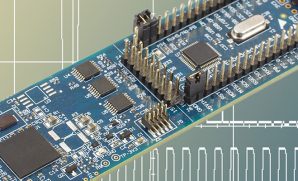Embedded systems are a diverse network of software and hardware requiring constant monitoring and vulnerability management to keep them secure. Through your product lifecycle, embedded systems will face risks that Common Vulnerabilities & Exposures (CVEs) expose as they flood every day in the National Vulnerability Database (NVD). It can be taxing to find the CVE that applies to your product from the public forum and quickly address them to avoid damaging your systems.
Not all CVEs pose the greatest risk to your systems, and therefore must be prioritized based on the available time. The process can be linked to emergency rooms where ‘five-point triage assessment’ scales are leveraged to allocate resources accordingly and ensure predictive outcomes. Similarly, triaging is an essential step in reducing the cybersecurity and device security risk to your embedded systems. It involves identifying each vulnerability and mitigating it with the best available resources and tools to identify the risks. Accordingly, a patch associated with the given vulnerability is dispatched on the priority basis.
What are the benefits of triaging?
- It saves a lot of manual effort put into sifting through CVEs that are publicly announced on a daily basis.
- The process is numerical, so it is easy to compare the vulnerabilities. The Common Vulnerability Scoring System (CVSS) score helps to streamline the list.
- It suggests ready software packages in use or to be installed to exploit a particular vulnerability.
- Assessing the attack vector of the base metrics, Vigiles, a vulnerability management tool, becomes instrumental. Depending on the type of embedded device, the local user access vectors can be considered or ignored. It is easy to put environmental metrics for the CVE to make custom CVSS scores.
- To judge the severity of the risk and avert a disaster, it is done before any work and responsibilities are assigned, so there is higher collaboration in securing the embedded devices.
- Vigiles allow teams to communicate and develop real-time plans to diminish threats
What are the best practices for triaging?
Along with the base metrics that provide general information about the vulnerability exploitability, you can employ other ways of ascribing priority to a certain vulnerability.
- The exploitability metrics can direct you to the technical means and how easily a vulnerability can be exploited.
- The impact metrics impart knowledge of whether the exploit will be successful and how it can change the operations of your embedded device.
- If the fix for a vulnerability does not exist, a workaround can be deployed before the final fix release using temporal metrics, alleviating the vulnerability’s urgency.
- Developing an in-house security team that will allow your organization to modify the metrics specific to your products on a single platform.
- With confidentiality rates high, it is possible to reduce collateral damage with continuous ongoing assessment.
- Per triage reports generated improve accuracy and whitelist CVEs and build complete software packages to comeback security risks.
Prioritizing mitigation of vulnerabilities
Just like any medical emergency or health risk, it is best to assess any possible vulnerabilities in embedded systems well in advance. Triaging vulnerabilities by proactively identifying and evaluating, therefore, is an essential part of vulnerability management. To manage this efficiently, your process must include a proactive team that does exactly that by communicating tasks, working collaboratively towards resolution, and ensuring predictively that such issues don’t occur in the future.
Wondering how you can troubleshoot security attacks and exploit vulnerabilities code for your unique product? YASH Technologies with SAP qualified solutions will help you throughout. Visit www.yash.com to explore the gamut of our services!






